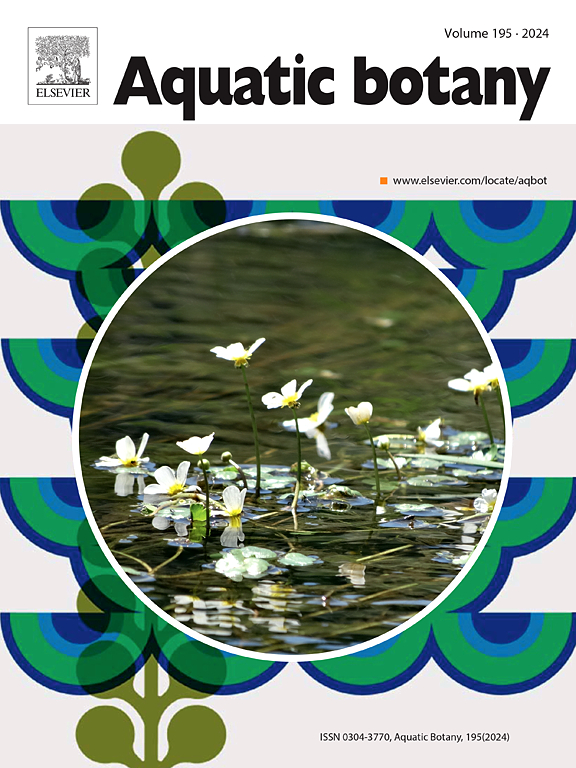遗传数据促进了对北美广泛存在的入侵香蒲(Typha × glauca)杂交带的研究
IF 2.6
4区 生物学
Q2 MARINE & FRESHWATER BIOLOGY
引用次数: 0
摘要
遗传数据可以为杂交带的进化生态学提供见解,对于研究广泛和隐蔽的杂交可能特别重要。在北美,一个广阔的杂交区包括香蒲Typha latifolia, T. angustifolia和它们的杂交T. x glauca。这种杂交物种是一种有问题的湿地入侵者,它改变了生态系统功能,减少了生物多样性。它是可育的,产生回交和高级杂交,导致与亲本物种形态重叠;因此,遗传数据对于了解杂交带的动态是必要的。在本文中,我们总结了遗传数据帮助我们了解这一杂交带的一些方法,包括亲本种和杂交种的分布;对称和不对称杂交;不同杂交类的流行;杂交适应度与杂交分解;基因流动和基因多样性。最后,我们确定了一些知识空白和未来的研究方向,可以帮助我们进一步了解什么可能是北美最广泛的杂交大型植物。本文章由计算机程序翻译,如有差异,请以英文原文为准。
Genetic data facilitate research into a widespread and invasive cattail (Typha × glauca) hybrid zone in North America
Genetic data can provide insights into the evolutionary ecology of hybrid zones and may be particularly important for investigating widespread and cryptic hybrids. In North America an expansive hybrid zone comprises the cattails Typha latifolia, T. angustifolia, and their hybrid T. × glauca. This hybrid is a problematic wetland invader that alters ecosystem functioning and reduces biodiversity. It is fertile and produces both backcrossed and advanced-generation hybrids, leading to morphological overlaps with parent species; therefore, genetic data are necessary for understanding the dynamics of this hybrid zone. In this review we summarize some of the ways in which genetic data have helped us to understand this hybrid zone, including the distributions of parent species and hybrids; symmetrical and asymmetrical hybrid crosses; the prevalence of different hybrid classes; hybrid fitness and hybrid breakdown; and gene flow and genetic diversity. We end by identifying some knowledge gaps and future research directions that can help us to further understand what may be the most widespread hybrid macrophyte in North America.
求助全文
通过发布文献求助,成功后即可免费获取论文全文。
去求助
来源期刊

Aquatic Botany
生物-海洋与淡水生物学
CiteScore
3.80
自引率
5.60%
发文量
70
审稿时长
6 months
期刊介绍:
Aquatic Botany offers a platform for papers relevant to a broad international readership on fundamental and applied aspects of marine and freshwater macroscopic plants in a context of ecology or environmental biology. This includes molecular, biochemical and physiological aspects of macroscopic aquatic plants as well as the classification, structure, function, dynamics and ecological interactions in plant-dominated aquatic communities and ecosystems. It is an outlet for papers dealing with research on the consequences of disturbance and stressors (e.g. environmental fluctuations and climate change, pollution, grazing and pathogens), use and management of aquatic plants (plant production and decomposition, commercial harvest, plant control) and the conservation of aquatic plant communities (breeding, transplantation and restoration). Specialized publications on certain rare taxa or papers on aquatic macroscopic plants from under-represented regions in the world can also find their place, subject to editor evaluation. Studies on fungi or microalgae will remain outside the scope of Aquatic Botany.
 求助内容:
求助内容: 应助结果提醒方式:
应助结果提醒方式:


